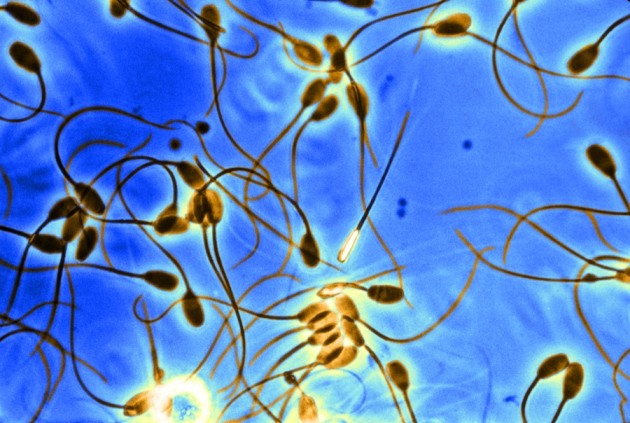博文
体外培养出人类精子和卵子
||
以色列和英国科学家培养人类的卵子和精子,材料来自一个人的皮肤细胞。这一研究的成功将给不育症的治疗前进了一步,当然会面临巨大的争议和安全性审查。该研究12月24日在线发表在《细胞》上,科学家首先将皮肤细胞诱导成为诱导干细胞 (iPS),这种细胞可以分化为任何细胞,包括精子和卵子。
2012年,京都大学干细胞学家Mitinori Saitou等体外培养出生殖原细胞。这种细胞起源于胚胎发育过程,个体成年后这种细胞可产生精子细胞和卵细胞。
Saitou教授也是使用动物皮肤细胞诱导成干细胞,使用胚胎干细胞也能完成同样的任务。尽管他的细胞不能继续发育,但是Saito发现如果将这些细胞移植到小鼠睾丸内,这种细胞能分化成熟并产生有功能的精子,如果将这种细胞移植到小鼠卵巢内,这种细胞能分化成熟并产生有功能的卵子,这种精子和卵子能在体受精。在人类细胞的同样尝试也取得部分成功,也能体外培养出生殖原细胞,但是成功率非常低,难以进行更多研究。
英国剑桥大学Azim Surani团队和以色列魏茨曼科学研究所Jacob Hanna团队合作开展的这一研究,率先实现完全体外培养出成熟精子和卵子细胞。
生殖问题总是比较敏感,不仅仅是解决不育的问题,这种技术也给人类的克隆提供了新的技术,因为从基因角度看,精子和卵子没有任何差异,完全可以用一个人获得两类生殖细胞。也给两个女人结合甚至两个男人结合繁衍后代带来了可能。这显然不是一个简单的生物学技术问题,涉及到非常多的伦理学问题。必然会受到众多学术内外的关注。
Thekey to the biologists’ success was finding the right starting point. A majorhurdle to repeating the feat in humans was the fact that mouse and humanembryonic stem cells are fundamentally different. Mouse embryonic stem cellsare ‘naive' — easy to coax into any differentiation path — whereas human stemcells are ‘primed’ in a way that makes them less adaptable.
ButHanna realized that those differences could be overcome by tweaking the cells,as he and his collaborators reported in 20133. He and his team developed a wayof making human stem cells that were naive like those of mice. “The first timewe used those cells with the Saitou protocol — boom! We got PGCs with highefficiency,” he says.
Workingtogether, Surani and Hanna were able to use embryonic stem cells and iPS cells,from both males and females, to make gamete precursor cells with 25–40%efficiency
“It is exciting that theSurani and Hanna labs have found a way to generate progenitor germline cellswith the highest efficiency ever reported,” says Amander Clark, areproductive-biology expert at the University of California, Los Angeles.
Thecells have many of the hallmarks of primordial germ cells. In particular, their‘epigenetic’ pattern — chemical modifications to the chromosomes that affectgene expression — was similar to those of primordial germ cells. The teamcompared protein markers in their artificial PGCs with those in real PGCscollected from aborted fetuses, and found them to be very similar.
“They are as similar tohuman PGCs as Saitou’s [artificial] PGCs are to real mouse PGCs,” says Hanna.
Saitousays mechanistic insights offered by the paper will probably boost efforts tofurther understand, and control, this process. In particular, in humans, aprotein called SOX17 seems to have a key role that in mice is played by adifferent protein, called Sox2.
Saitou,who is also working on developing human PGCs in a dish, calls it an“interesting finding”, and says that, overall, the process for creating suchcells “is much more clearly defined compared to previous, ambiguous work, andtherefore this will be a good foundation for further investigations”. Clarkagrees: “It is the special mechanistic insight into human germline developmentthat makes this paper unique,” she says.
Inmice, the next step is to introduce the engineered PGCs into testes or ovaries,to complete the ‘second half’ of the Saitou process, their development intofunctional sperm or eggs.
ButHanna says that he and his collaborators are “not ready to take that plunge” inhumans, and others agree that there are still too many unknowns to introducethe artificial PGCs into humans.
Hesays that they are also considering injecting the human artificial PGCs intothe testes or ovaries of mice and other animals, or to try the whole experimentin non-human primates. He says that ongoing efforts by Saitou and others, tocomplete the process of mouse sperm and egg development in vitro, could lead toa recipe that can be tweaked for humans.
“I’m still gathering mythoughts. We will see after the paper is published what the community will think,”Hanna says.
Clarksays that regulators should make way for the human experiments that will benecessary to move the technology to the clinic and potentially enable somesterile men and women to conceive. In the United States, for example, lawforbids federal funding of the creation of human embryos for research purposes,something that would be necessary to test the new technology. The restrictions“need to be lifted and replaced with universal guidelines on how to do thisresearch ethically and safely”, she says.
Inprinciple, the process could even be used to derive egg cells from a man'sbody. These could be fertilized in vitro by another man's sperm and theresulting embryo could then be implanted in a surrogate mother — enabling thetwo men to have a biological child together. But the technical hurdles would beformidable: in particular, men do not have ovaries in which the precursor cellscould be allowed to mature into eggs. Moreover, the idea would be guaranteed toface controversy.
"Itis really important to emphasize that while this scenario might be technicallypossible and feasible, it is remote at this stage and many challenges need tobe overcome," Hanna says. Enabling two women to have biological childrentogether seems even more remote, the authors add, because only men have the Ychromosome, which is essential for the production of sperm cells.
https://wap.sciencenet.cn/blog-41174-853714.html
上一篇:好论文同样会被拒稿
下一篇:埃博拉逼宫现代医学重新启用古老疗法
